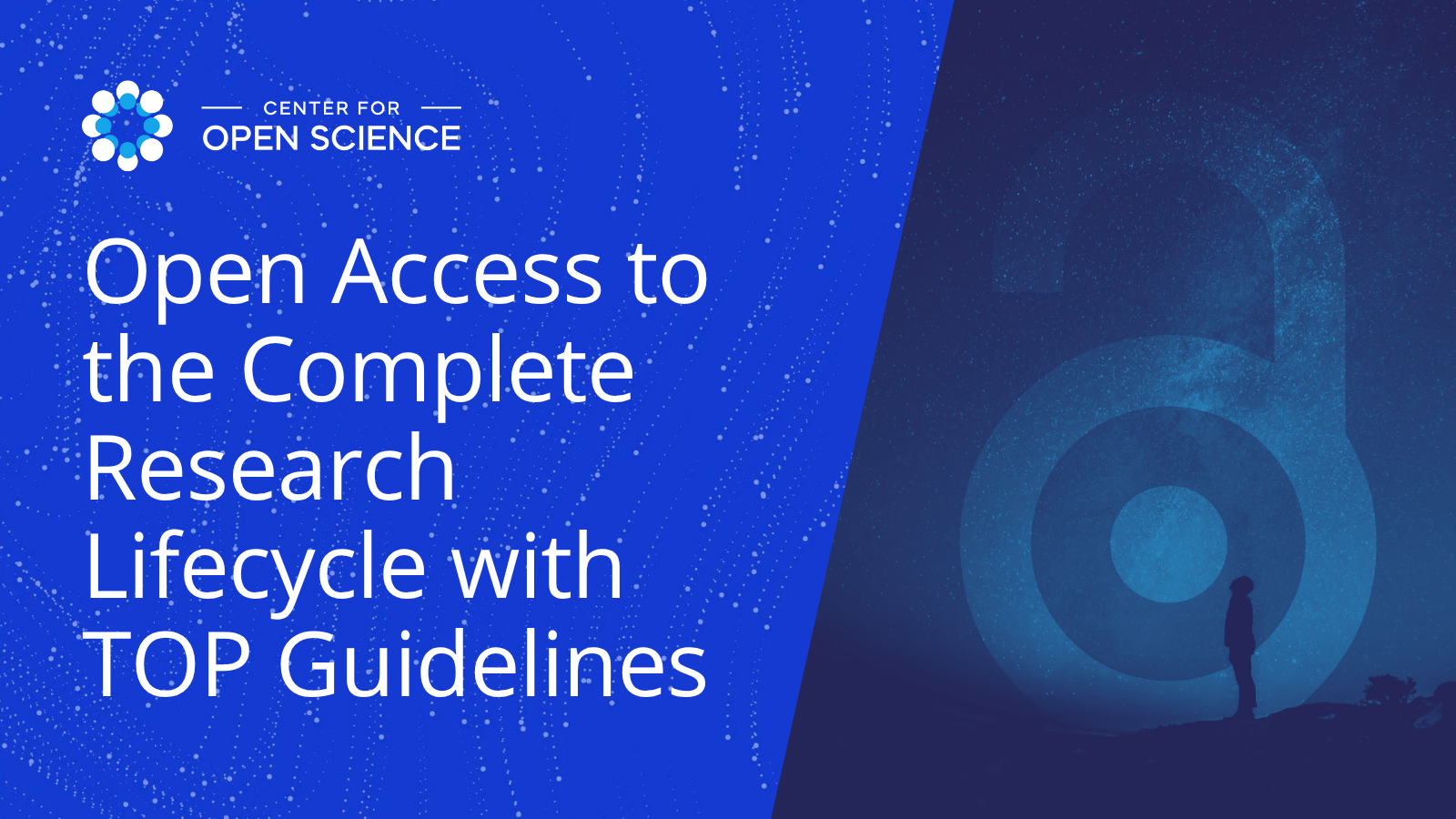
In honor of Open Access (OA) Week 2025, it’s important to take a moment and appreciate how far we’ve come towards seeing the public availability of research as a normal and expected part of scholarly communication. Making sure that everyone is able to read the results of publicly funded research is an important step forward. As public institutions roll out these new expectations, librarians are helping to disseminate this guidance so that authors can easily comply. And as public agencies continue to refine the details of these policies, COS will continue to engage in the process so that unintended consequences can be addressed.
OA is of course only one component of open science. Even as OA grows, our mission continues to advocate for making the complete research lifecycle—from planning and preregistration through data sharing and publication—as open as possible. Our most visible policy effort towards that end is the Transparency and Openness Promotion (TOP) Guidelines. Updated in 2025, TOP is a map for thinking holistically about open science for the specific purpose of increasing the verifiability of empirical research claims. Surveys show that access to underlying data increases trust in research, and TOP helps to articulate precisely what that could include.

TOP consists of seven research practices that scientists can adopt in order to provide open access to the complete research lifecycle. These include: registering the study, posting a detailed protocol, creating an analysis plan, sharing materials used to conduct the study, depositing the data in a digital repository, posting code used to analyze that data, and using a detailed checklist to ensure that the final report contains all of the details needed to interpret the results. Taken together, these steps help make sure that the outputs are shared and cited so that they can be discovered.
The above seven steps were included in the most recent update because they consist of the items needed to look under the hood and verify the results. Posting the study in a public registry anchors it and provides documentation that the study exists and will be reported on. A detailed protocol contains instructions so that others could conduct the steps in the right order, and an analysis plan helps to provide important details on how the outcomes will be measured before the results are known. This is particularly important if the study will test specific hypotheses or make an inference from a study population to a general population.
Since its origin in 2008, Open Access Week has been an important time to raise awareness and to advocate for better dissemination of research. Given current threats to involve political pressure into the process of science, it is more important than ever to follow our values and to do what we can to improve trust and verifiability of scientific evidence. So take a moment to consider what steps you’ll take next by posting a research output when it’s available for sharing.

6218 Georgia Avenue NW, Suite #1, Unit 3189
Washington, DC 20011
Email: contact@cos.io

Unless otherwise noted, this site is licensed under a Creative Commons Attribution 4.0 International (CC BY 4.0) License.
Responsible stewards of your support
COS has earned top recognition from Charity Navigator and Candid (formerly GuideStar) for our financial transparency and accountability to our mission. COS and the OSF were also awarded SOC2 accreditation in 2023 after an independent assessment of our security and procedures by the American Institute of CPAs (AICPA).
We invite all of our sponsors, partners, and members of the community to learn more about how our organization operates, our impact, our financial performance, and our nonprofit status.